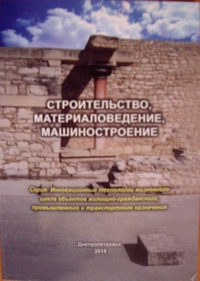Using the building mass to obtain thermal comfort in the summer period: a green solution
Keywords:
The quality of the environment, mortality, engineering and design solutionAbstract
Indoor environmental quality (IEQ) is an important issue for many stakeholders: be it the owner, the user either the employee. Many studies pointed out that the annual cost for getting a good quality indoors, can be located between 9 and 25 EUR per square meter. While the functional cost (including salary) can be as high as 680 to 5100 EUR per square meter. The ratio between those two costs being two orders of magnitude different. IEQ deals with: thermal comfort, air quality, noise acoustics, illumination and exposure time. The personal factors that help to realize comfort are: activity, clothing, adaption and expectation. If good IEQ cannot realized with personal factors a good air conditioning system has to be put in place. During the preliminary design the design engineer should propose different solutions to the owner and architect. Different projects call for different solutions. In this contribution an example will be discussed, showing how a design engineer could suggest acceptable solutions for thermal comfort and air quality, without generating ventilation noise neither use active cooling energy.
References
Numerical sensitivity study of transient surface convection during night cooling. Sarah Leenknegt, Rolf Wagemakers, Walter Bosschaerts, Dirk Saelens (Elsevier Energy and Buildings 53. – (2012). P. 85-95.
Numerical study of convection during night cooling and theimplications for convection modeling in Building Energy Simulation models. Sarah Leenknegt, Rolf Wagemakers, Walter Bosschaerts, Dirk Saelens(Elsevier Energy and Buildings 64. – (2013). P. 41-52.
Numerical and experimental analysis of passive cooling through night ventilation Sarah Leenknegt PhD thesis. – 2013.
Downloads
Issue
Section
License
Редакція Видання категорично засуджує прояви плагіату в статтях та вживає всіх можливих заходів для його недопущення. Плагіат розглядається як форма порушення авторських прав і наукової етики.
При виявлені у статті більш ніж 25% запозиченого тексту без відповідних посилань та використання лапок, стаття кваліфікується як така, що містить плагіат. У цьому випадку стаття більше не розглядається редакцією, а автор отримує перше попередження.
Автори, в статтях яких повторно виявлено плагіат, не зможуть публікуватися в усіх журналах Видавництва ДВНЗ «Придніпровська державна академія будівництва та архітектури».
Автори, які публікуються у цьому журналі, погоджуються з наступними умовами:
- Автори залишають за собою право на авторство своєї роботи та передають журналу право першої публікації цієї роботи на умовах ліцензії Creative Commons Attribution License, котра дозволяє іншим особам вільно розповсюджувати опубліковану роботу з обов'язковим посиланням на авторів оригінальної роботи та першу публікацію роботи у цьому журналі.
- Автори мають право укладати самостійні додаткові угоди щодо неексклюзивного розповсюдження роботи у тому вигляді, в якому вона була опублікована цим журналом (наприклад, розміщувати роботу в електронному сховищі установи або публікувати у складі монографії), за умови збереження посилання на першу публікацію роботи у цьому журналі.
- Політика журналу дозволяє і заохочує розміщення авторами в мережі Інтернет (наприклад, у сховищах установ або на особистих веб-сайтах) рукопису роботи, як до подання цього рукопису до редакції, так і під час його редакційного опрацювання, оскільки це сприяє виникненню продуктивної наукової дискусії та позитивно позначається на оперативності та динаміці цитування опублікованої роботи (див. The Effect of Open Access).

